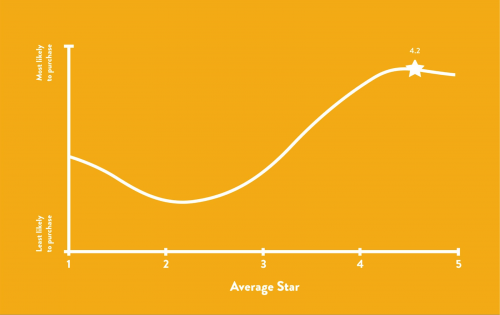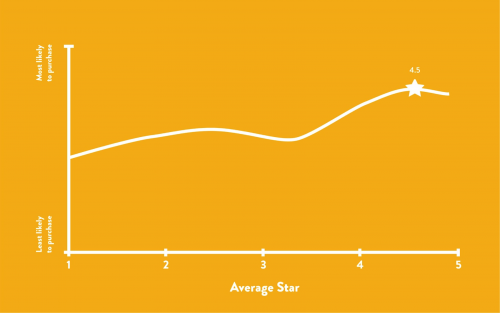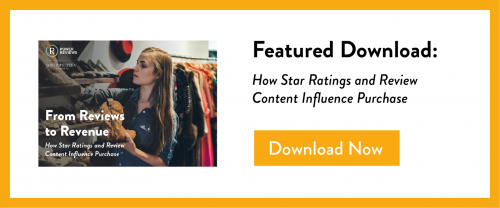Shoppers are more likely to buy products that have higher average ratings. It seems obvious. But a recent study from PowerReviews and Northwestern University’s Spiegel Digital and Database Research Center found that the relationship between the average star rating of a product and its sales is not linear. Simply stated, the likelihood of a product being purchased doesn’t necessarily increase as its star rating increases.
The Northwestern research team analyzed ratings and reviews data in the consumer packaged goods industry and found that the number of stars has little effect on purchase probability when the rating is between 1 and about 3 stars. But when the average star rating surpasses 3, so does the likelihood of purchase. In other words, a customer is more likely to purchase a product with a 4 star rating that one with 3 stars.
Purchase likelihood then peaks when the average star rating of a product is between 4.2 and 4.5 stars. Once the average star rating surpasses this sweet spot, however, the purchase likelihood actually drops. Surprisingly, a shopper is more likely to purchase a product with an average of 4.2 stars than one with a 5 star rating.
Take a look at the graphs below and you’ll see that there’s some variation within categories. But the conclusion is the same: a perfect 5 star rating is NOT the most desirable.
Hair Color
Lightbulbs
Why a 5 Star Rating Isn’t the Best
Why do purchases drop off once the average star rating surpasses 4.2-4.5? The Northwestern research team believes this is because consumers perceive ratings closer to a perfect 5.0 as “too good to be true.”
Consumers are smart and know that a product can’t be all things to all people. And they appreciate negative reviews as an important element in their decision-making process. In fact, previous PowerReviews research found that 82% of shopper specifically seek out negative reviews. Among shoppers under 45, this number jumps to 86%.
Embrace Negative Reviews
Your knee jerk reaction may be to reject negative reviews. But the research from Northwestern proves that this isn’t the best course of action to drive sales. While you certainly don’t want to aim for negative reviews, allowing them on your site brings authenticity to your review content and helps you build trust with shoppers, especially the vast majority of consumers who are actively seeking out these negative reviews.







